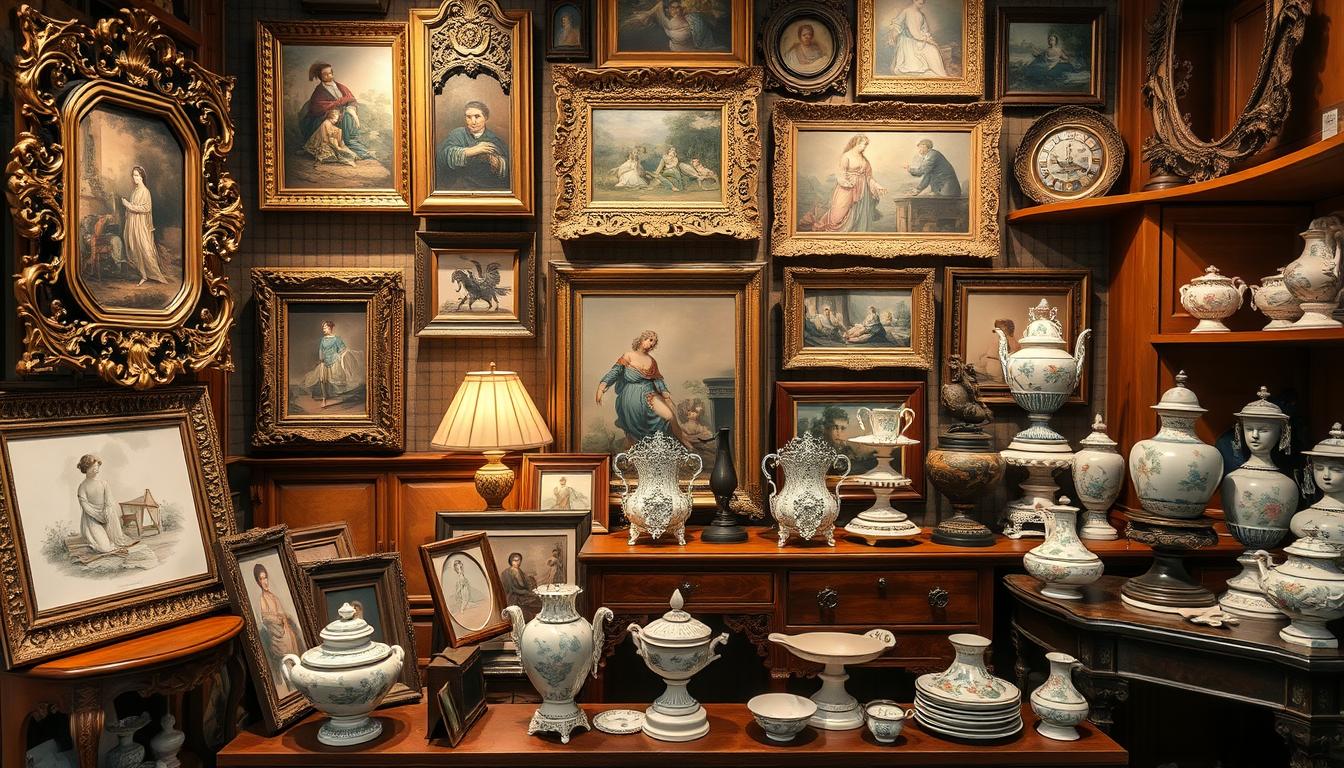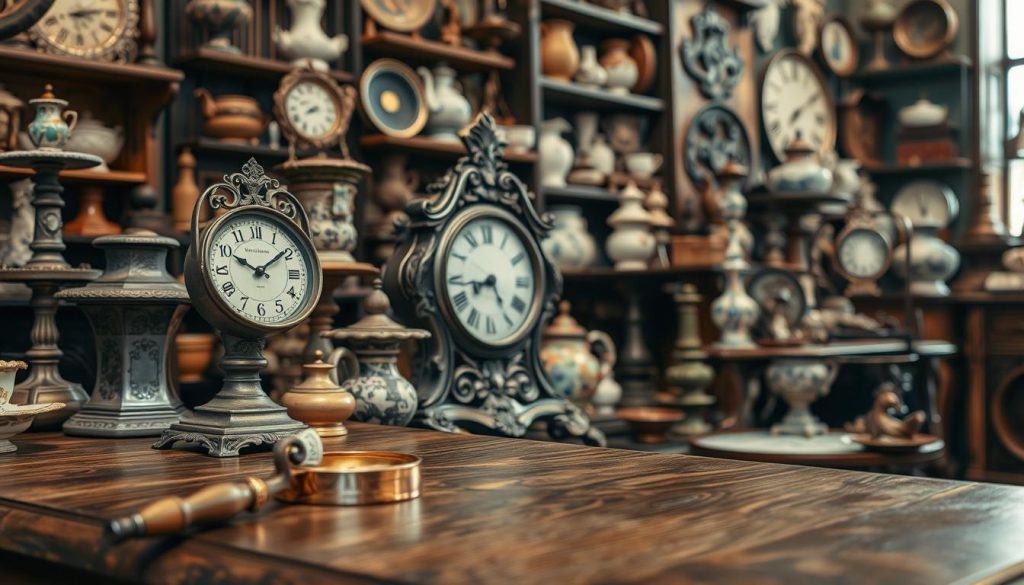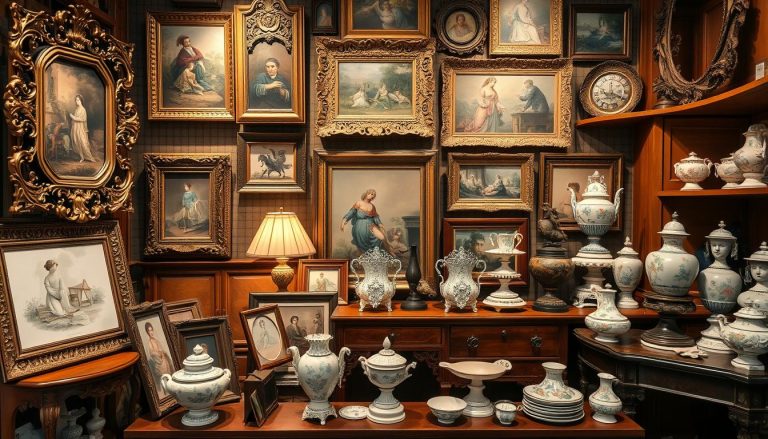
Welcome to the world of arts antiques, where every piece tells a story. These treasures are more than items; they are stories waiting to be shared. From stunning vintage art to beautifully crafted furniture, each piece showcases exceptional skill and brings a sense of nostalgia.
Our specialty services focus on finding and curating these remarkable pieces. We ensure your collection is not only beautiful but also historically significant. With our expertise and passion, we aim to preserve these exquisite objects for future generations.
The Allure of Arts Antiques
Arts antiques have a special charm that attracts many. Their stories and the nostalgia they bring are key. These items connect us to the past in a way modern things can’t.
Understanding their vintage charm helps us see their craftsmanship and historical value. This opens a new way to appreciate them.
Understanding the Vintage Charm
The vintage charm of arts antiques is unique and rich. Each piece has its own history, often tied to personal or cultural stories. This connection to the past creates a deep emotional bond.
Collectors look for these items not just for how they look. They seek the memories and stories they hold.
The Craftsmanship Behind Antiques
Antiques are known for their exceptional craftsmanship. Artisans used old techniques and materials, now forgotten. This shows a dedication to artistry that’s rare today.
This craftsmanship makes the items beautiful and valuable. It’s a key reason why antiques are treasures worth keeping.
| Aspect | Arts Antiques Appeal | Modern Items |
|---|---|---|
| Craftsmanship | Handcrafted, unique designs | Mass-produced, uniform designs |
| Historical Value | Significant cultural or personal history | Limited or no historical significance |
| Nostalgia | Evokes personal and cultural memories | Often lacks emotional connection |
| Age | Often decades or centuries old | Typically new or recent items |
Specialty Services: Arts Antiques
Managing a collection of arts antiques needs skill and care. Specialty services help collectors curate and restore their items. It’s about finding pieces that look good and have history.
Curating Unique Collections
Curating antiques is more than buying items. It’s about creating a collection with a story. Experts offer services to help collectors:
- Find missing pieces
- Get items that fit their theme
- Check the history and value of items
Working with experts helps collectors make better choices. They learn more about curating antiques, leading to more valuable finds.
Restoration Techniques for Longevity
Keeping antiques in good shape is key. Modern restoration methods fix items without losing their original charm. Some common methods include:
- Cleaning and preserving surfaces
- Fixing structural issues
- Reupholstering furniture
Choosing quality restoration keeps antiques looking and feeling new. It lets collectors enjoy the art and history of each piece.

| Restoration Technique | Description | Benefits |
|---|---|---|
| Cleaning | Removing dirt and grime without damaging materials | Enhances visual appeal and extends life |
| Structural Repairs | Fixing any damages to the framework | Ensures longevity and safe use |
| Reupholstering | Updating fabrics while preserving style | Maintains comfort and aesthetic of furniture |
Specialty services in antique curation and restoration are vital. They help keep the beauty and importance of arts antiques alive. This way, collectors can enjoy and share their treasures for years to come.
How to Identify Quality Antiques
Knowing how to spot quality antiques is key for collectors and enthusiasts. It’s about looking for certain signs that show an item is real. Here are important points to help tell real antiques from fake ones.
Key Characteristics of Genuine Antiques
There are key signs to look for when identifying antiques. Real antiques often have:
- Age: They’re usually over 100 years old, making them historically valuable.
- Craftsmanship: They show high-quality, manual work that sets them apart.
- Materials: They use original materials from their time.
- Historical significance: Items with a rich history are more valuable.
Red Flags to Watch Out For
When looking for antiques, watch out for signs that might mean they’re not real. Common warning signs include:
- Lack of Patina: A too shiny look might mean it’s a fake.
- Machine-made Tags: Real antiques often have hand-carved or marked details.
- Incorrect Age: The age of an item should match its historical context.
- Maker’s Marks: Look for recognizable signatures to help value an antique.
The Importance of Provenance
Provenance is crucial for verifying an antique’s authenticity and value. A documented history of ownership greatly impacts its worth. A strong provenance tells a lot about an item’s past, making it more appealing to collectors. It’s essential to look for solid documentation to confirm an antique’s quality.

| Characteristic | Genuine Antique | Reproduction |
|---|---|---|
| Age | Over 100 years | Less than 100 years |
| Craftsmanship | Handcrafted, detailed | Mass-produced |
| Materials | Original, era-specific | Modern substitutes |
| Provenance | Documented history | Unknown or questionable |
Where to Find Quality Arts Antiques
Finding quality arts antiques is an exciting journey. It’s filled with chances to discover unique treasures. Antique shops are a favorite spot, offering a wide range of items. These items often show both historical value and artistic beauty.
Many shops have knowledgeable staff. They can tell you about the items’ history and how they were made. This makes buying a piece more enjoyable.
Online auctions like Sotheby’s and Christie’s are great for finding high-end antiques. They offer items from top dealers worldwide. But, it’s important to check the auction house’s reputation and the items’ authenticity before bidding.
Art fairs are also a great place to find antiques. They bring together top dealers and galleries. Here, you can talk directly to sellers and see the items up close. Always choose dealers you trust and do your research to avoid fake items.




